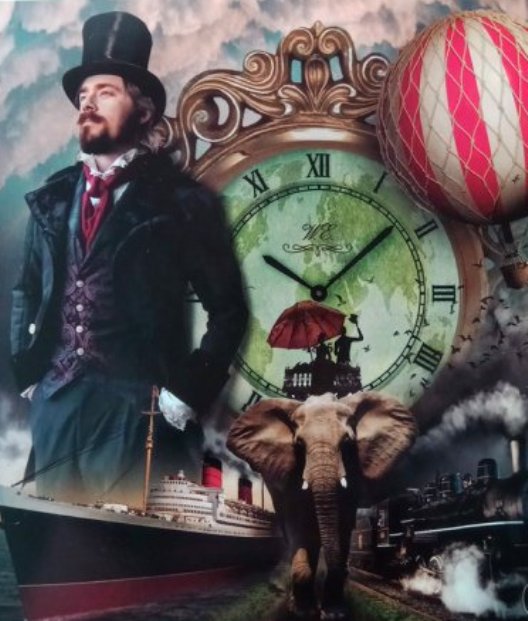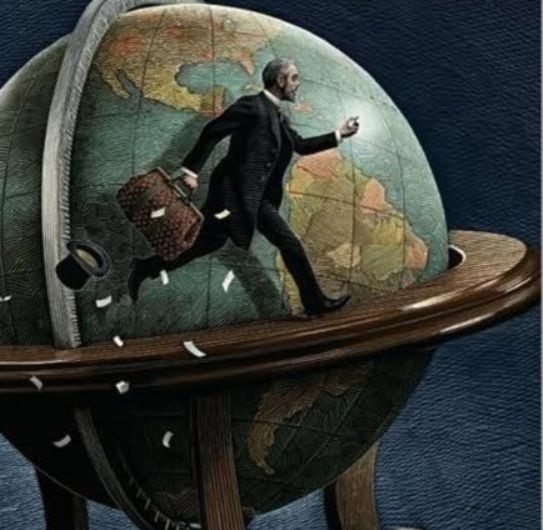Around the World in Eighty Days by Jules Verne

Around the World in Eighty Days occupies a key position in Jules Verne’s series of Extraordinary Journeys. By 1872 his heroes have penetrated the heart of Africa, conquered the Pole, urgently plumbed the ocean’s and Earth’s depths, and even headed breezily for the moon. Now they have only one
task left: that of summing up the whole travelling business, encompassing the entire globe in one last extravagant fling. Under its gay abandon, then, Around the World is streaked with the melancholy of transitoriness. Henceforth, there can be no virgin territory and no deflowering heroes - just glorified tourists.
Table of Content
Chapter I. In which Phileas Fogg and Passepartout accept each other, the one as master, the other as man
Chapter II. In which Passepartout is convinced that he has at last found his ideal
Chapter III. In which a conversation takes place which seems likely to cost Phileas Fogg dear
Chapter IV. In which Phileas Fogg astounds Passepartout, his servant
Chapter V. In which a new species of funds, unknown to the moneyed men, appears on ’Change
Chapter VI. In which Fix, the detective, betrays a very natural impatience
Chapter VII. Which once more demonstrates the uselessness of passports as aids to detectives
Chapter VIII. In which Passepartout talks rather more, perhaps, than is prudent
Chapter IX. In which the Red Sea and the Indian Ocean prove propitious to the designs of Phileas Fogg
Chapter X. In which Passepartout is only too glad to get off with the loss of his shoes
Chapter XI. In which Phileas Fogg secures a curious means of conveyance at a fabulous price
Chapter XII. In which Phileas Fogg and his companions venture across the Indian forests, and what ensued
Chapter XIII. In which Passepartout receives a new proof that fortune favours the brave
Chapter XIV. In which Phileas Fogg descends the whole length of the beautiful valley of the Ganges without ever thinking of seeing it
Chapter XV. In which the bag of bank-notes disgorges some thousands of pounds more
Chapter XVI. In which Fix does not seem to understand in the least what is said to him
Chapter XVII.Showing what happened on the voyage from Singapore to Hong Kong
Chapter XVIII. In which Phileas Fogg, Passepartout, and Fix go each about his business
Chapter XIX. In which Passepartout takes a too great interest in his master, and what comes of it
Chapter XX. In which Fix comes face to face with Phileas Fogg

Chapter XXI. In which the master of the Tankadere runs great risk of losing a reward of two hundred pounds
Chapter XXII. In which Passepartout finds out that, even at the antipodes, it is convenient to have some money in one’s pocket
Chapter XXIII. In which Passepartout’s nose becomes outrageously long
Chapter XXIV. During which Mr. Fogg and party cross the Pacific Ocean
Chapter XXV. In which a slight glimpse is had of San Francisco
Chapter XXVI. In which Phileas Fogg and party travel by the Pacific Railroad
Chapter XXVII. In which Passepartout undergoes, at a speed of twenty miles an hour, a course of Mormon history
Chapter XXVIII. In which Passepartout does not succeed in making anybody listen to reason
Chapter XXIX. In which certain incidents are narrated which are only to be met with on American railroads
Chapter XXX. In which Phileas Fogg simply does his duty
Chapter XXXI. In which Fix the detective considerably furthers the interests of Phileas Fogg
Chapter XXXII. In which Phileas Fogg engages in a direct struggle with bad fortune
Chapter XXXIII. In which Phileas Fogg shows himself equal to the occasion
Chapter XXXIV. In which Phileas Fogg at last reaches London
Chapter XXXV. In which Phileas Fogg does not have to repeat his orders to Passepartout twice
Chapter XXXVI. In which Phileas Fogg’s name is once more at a premium on ’Change
Chapter XXXVII. In which it is shown that Phileas Fogg gained nothing by his tour around the world, unless it were happiness